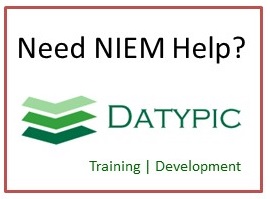gml:TimePeriod
gml:TimePeriod acts as a one-dimensional geometric primitive that represents an identifiable extent in time. The location in of a gml:TimePeriod is described by the temporal positions of the instants at which it begins and ends. The length of the period is equal to the temporal distance between the two bounding temporal positions. Both beginning and end may be described in terms of their direct position using gml:TimePositionType which is an XML Schema simple content type, or by reference to an indentifiable time instant using gml:TimeInstantPropertyType. Alternatively a limit of a gml:TimePeriod may use the conventional GML property model to make a reference to a time instant described elsewhere, or a limit may be indicated as a direct position.
Element information
Namespace: http://www.opengis.net/gml/3.2
Schema document: external/ogc/gml/3.2.1/temporal.xsd
Type: gml:TimePeriodType
Properties: Global, Qualified
Content
- Sequence [1..1]
- gml:metaDataProperty [0..*]
- gml:description [0..1]The value of this property is a text description of the object. gml:description uses gml:StringOrRefType as its content model, so it may contain a simple text string content, or carry a reference to an external description. The use of gml:description to reference an external description has been deprecated and replaced by the gml:descriptionReference property.
- gml:descriptionReference [0..1]The value of this property is a remote text description of the object. The xlink:href attribute of the gml:descriptionReference property references the external description.
- gml:identifier [0..1]Often, a special identifier is assigned to an object by the maintaining authority with the intention that it is used in references to the object For such cases, the codeSpace shall be provided. That identifier is usually unique either globally or within an application domain. gml:identifier is a pre-defined property for such identifiers.
- gml:name [0..*]The gml:name property provides a label or identifier for the object, commonly a descriptive name. An object may have several names, typically assigned by different authorities. gml:name uses the gml:CodeType content model. The authority for a name is indicated by the value of its (optional) codeSpace attribute. The name may or may not be unique, as determined by the rules of the organization responsible for the codeSpace. In common usage there will be one name per authority, so a processing application may select the name from its preferred codeSpace.
- gml:relatedTime [0..*]
- Choice [1..1]
- Choice [1..1]
- Choice [0..1]
- gml:durationgml:duration conforms to the ISO 8601 syntax for temporal length as implemented by the XML Schema duration type.
- gml:timeInterval gml:timeInterval conforms to ISO 11404 which is based on floating point values for temporal length. ISO 11404 syntax specifies the use of a positiveInteger together with appropriate values for radix and factor. The resolution of the time interval is to one radix ^(-factor) of the specified time unit. The value of the unit is either selected from the units for time intervals from ISO 31-1:1992, or is another suitable unit. The encoding is defined for GML in gml:TimeUnitType. The second component of this union type provides a method for indicating time units other than the six standard units given in the enumeration.
from type gml:AbstractGMLTypefrom group gml:StandardObjectPropertiesfrom type gml:AbstractTimePrimitiveTypefrom group gml:timeLength
Attributes
| Name | Occ | Type | Description | Notes |
|---|---|---|---|---|
| gml:id | [1..1] | xsd:ID | The attribute gml:id supports provision of a handle for the XML element representing a GML Object. Its use is mandatory for all GML objects. It is of XML type ID, so is constrained to be unique in the XML document within which it occurs. | from type gml:AbstractGMLType |
| frame | [0..1] | xsd:anyURI | Default value is "#ISO-8601". from type gml:AbstractTimeGeometricPrimitiveType |
Used in
- Group gml:Value
- Type gml:ArrayAssociationType (Element gml:members)
- Type gml:DomainSetType (Elements gml:domainSet, gml:multiPointDomain, gml:multiCurveDomain, gml:multiSurfaceDomain, gml:multiSolidDomain, gml:gridDomain, gml:rectifiedGridDomain)
- Type gml:RelatedTimeType via extension of gml:TimePrimitivePropertyType (Element gml:relatedTime)
- Type gml:TimePeriodPropertyType (Elements gml:epochOfUse, gml:extent)
- Type gml:TimePrimitivePropertyType (Element gml:validTime)
- Type gml:ValueArrayPropertyType via reference to gml:Value (Element gml:valueComponents)
- Type gml:ValuePropertyType via reference to gml:Value (Elements gml:valueProperty, gml:valueComponent)
- Type gts:TM_Primitive_PropertyType (Element gmd:extent)
Substitution hierarchy
- gml:AbstractObject
- can be substituted with gml:AbstractGML
- can be substituted with gml:AbstractTimeObject
- can be substituted with gml:AbstractTimePrimitive
- can be substituted with gml:AbstractTimeGeometricPrimitive
- can be substituted with gml:TimePeriod
- can be substituted with gml:AbstractTimeGeometricPrimitive
- can be substituted with gml:AbstractTimePrimitive
- can be substituted with gml:AbstractTimeObject
- can be substituted with gml:AbstractGML
Sample instance
<gml:TimePeriod gml:id="ID"> <gml:metaDataProperty> <gml:GenericMetaData>Any text, intermingled with: <!--any element--> </gml:GenericMetaData> </gml:metaDataProperty> <gml:description>string</gml:description> <gml:descriptionReference/> <gml:identifier codeSpace="http://www.example.com/">string</gml:identifier> <gml:name>string</gml:name> <gml:relatedTime> <gml:TimeInstant gml:id="ID"> <gml:metaDataProperty>... </gml:metaDataProperty> <gml:description>string</gml:description> <gml:descriptionReference/> <gml:identifier codeSpace="http://www.example.com/">string</gml:identifier> <gml:name>string</gml:name> <gml:relatedTime>... </gml:relatedTime> <gml:timePosition>12:00:00</gml:timePosition> </gml:TimeInstant> </gml:relatedTime> <gml:beginPosition>12:00:00</gml:beginPosition> <gml:endPosition>12:00:00</gml:endPosition> <gml:duration>P1Y2M3DT10H</gml:duration> </gml:TimePeriod>



